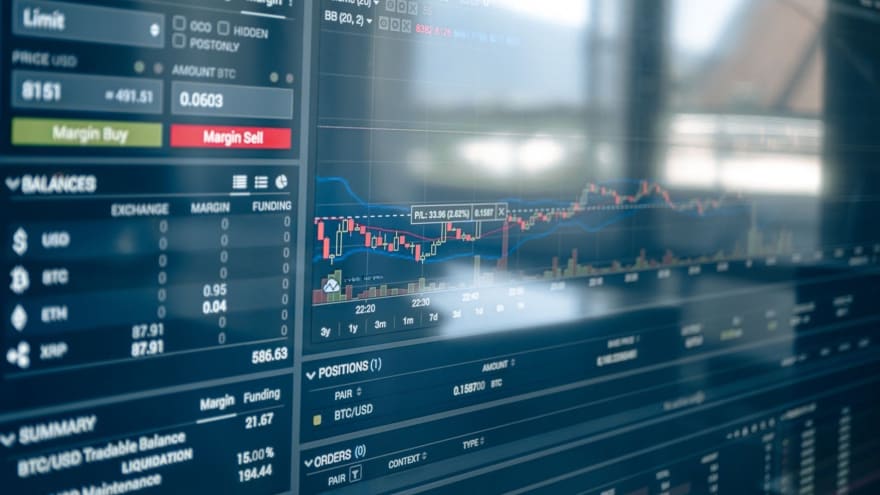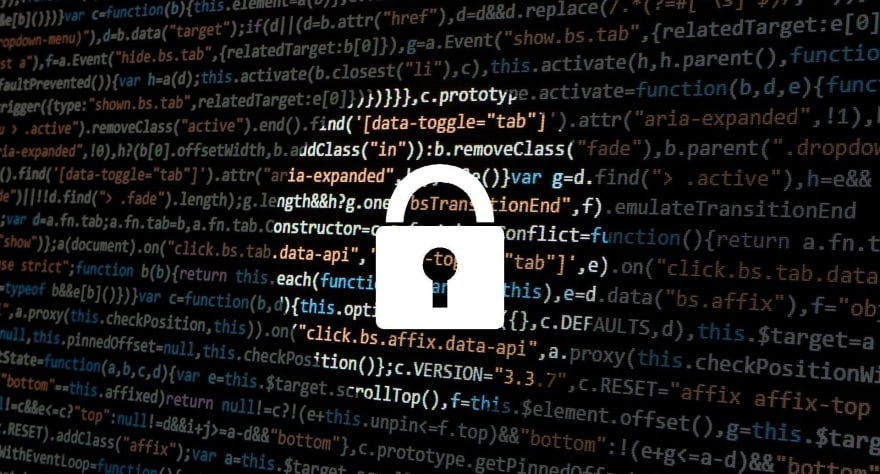People sometimes wrongly use the terms web scraping and web crawling synonymously. Although they’re closely related, they’re different actions that need proper delineation — at least, so you can know which one is ideal for your needs at a certain point in time. And understand what the differences are.
So starting with web scraping, let’s dive into the nitty-gritty of each of these two web actions.
Why Scrape the Web?
With millions of information getting scraped daily, data scraping is now a part of the new internet trend. Despite this, Statista still estimated the amount of data generated on the internet in 2020 alone to be 64.2 zettabytes. It then projected that this value would’ve increased by more than 179 percent by 2025.
Big organizations and individuals have used the data available on the web for purposes including, but not limited to: predictive marketing, stock price prediction, sales forecasting, competitive monitoring, and more. With these applications, it’s glaring that data is a driver of growth for many businesses today.
Additionally, with the world now drifting more towards automation, data-driven machines are now springing up. These machines, as accurate as they are, feed on data using machine learning technology. A strict rule of machine learning requires that an algorithm learns patterns from big data over time. Thus, it probably would’ve been impossible to train machines without data. Nonetheless, images, texts, videos, and products on e-commerce websites are all valuable information that drives the world of artificial intelligence.
It’s, therefore not far-fetched, why existing companies, start-ups, and individuals resort to the web to gather as much information as they can. Ultimately, it means in today’s business world, the more data you have, the more likely you are to be ahead of your competitors. Thus, web scraping becomes essential.
What Is Web Scraping?
Web scraping, as it sounds, is an act of extracting or sweeping off information from the web. Regardless of the target data, web scraping may be automated using scripted languages and dedicated scraping tools or done manually via copying and pasting. Manual web scraping, of course, isn’t practical. And while writing a scraping script might help, it can be costly and technical as you might need to hire a programmer for it.
However, using automatic no-code web scraping tools makes the process easy and faster without shedding huge bucks. Automatio, for instance, in addition to its versatile automation toolset, also offers a reliable, flexible, fast, and efficient out-of-the-box no-code tool for scraping any website. So it lets you get as much data as you want, and you can design your scraping bot in no time without writing a single line of code.
How Do Web Scrapers Work?
Web scrapers use the hypertext transfer protocol (HTTP) to request data from a web page using the get method. On most occasions, once it receives a valid response from the web page, a scraper collects updated content from the client side. It does so by attaching itself to specific HTML tags containing readily updated target data.
There are many methods of web scraping, though. For instance, a scraping bot can evolve to request data directly from another website’s database. Thus, getting real-time updated content from the provider’s server. This type of request to another database from a data scraper usually requires that the website offering the data provides an application programming interface (API), which uses defined authentication protocols to connect the scraper to its database.
Web scrapers created using Python, for instance, may use the request.get method to retrieve data from a source or use dedicated web scraping libraries like BeautifulSoup to gather rendered content from a web page. Those built using JavaScript typically depend on fetch or Axios to connect and get data from a source.
After getting the data, scrapers often dump collected information into a dedicated database, a JSON object, a text file, or an excel file. And because of the inconsistencies in the gathered information, data cleaning often follows scraping.
Web Scraping Methods
Whether you use third-party automated tools or code from scratch, web scraping involves any or a combination of these methods:
DOM or tag parsing: DOM parsing involves client-side inspection of a webpage to create an in-depth DOM tree that shows all nodes. Thus, making it easy to retrieve related data from a webpage.
Tag grabbing: Here, a web scraper targets specific tags on a web page and collects their content. For example, an e-commerce scraper might collect content in all h2 tags because they contain product names and reviews.
HTTP API requests: This involves connecting to a data source using an API. It’s helpful when the goal is to retrieve updated content from a database.
Use of semantic or metadata annotation: This method leverages the relationship between a group of data called metadata to extract information in a trendy fashion. For instance, you might decide to retrieve information relating to animals and countries from a web page.
Unix text gripping: Text gripping uses standard Unix regex to grab matching data from a large log of files or a web page.
What Is Web Crawling and How Does it Work?
While a crawler or a spider bot might download a website’s content in the process of crawling it, scraping isn’t its ultimate goal. A web crawler typically scans the information on a website to check specific metrics. Ultimately it learns about a website’s structure and what it’s all about.
A crawler works by collecting Unique Resource Locators (URLs) belonging to many web pages into a crawl frontier. It then uses a site downloader to retrieve content, including the entire DOM structure, to create replicas of browsed web pages. It then stores these into a database, where they can be accessed as a list of relevant results when queried.
Thus, a web crawler is a programmed software that serially and rapidly surfs the internet for content and organizes them to display relevant ones upon request.
Some crawlers like Google and Bing bots, for instance, rank content based on many factors. A notable ranking factor is the use of naturally occurring keywords in a website’s content. You can view this as a seller collecting different items from a wholesale store, arranging them in order of importance, and providing the most relevant to buyers on request. Invariably, a crawling bot typically branches into related external links it finds while crawling a website. It then crawls and indexes them as well.
There are many crawlers out there besides Google and Bing bots, though. And many of them also offer specific services besides indexing.
Unlike a web scraper, a crawling bot surfs the web continuously. In essence, it’s automatically triggered. It then gathers real-time content from many websites as they get updated on the client side. Moving across a website, they recognize and pick up all crawlable links to assess scripts, HTML tags, and metadata on all its pages, except for those restricted by one means or another. Sometimes, spider bots leverage site maps to achieve the same purpose. Websites with sitemaps are, however, faster to crawl than those without one.
Applications of Web Crawling
Unlike web scraping, web crawling has more applications ranging from Search Engine Optimization (SEO) analytics to search engine indexing, general performance monitoring, and more. And part of its applications may also include scraping a web page.
While you might manually scrape the web slowly, you can’t crawl it all by yourself, as it requires faster and more accurate bots; this is why they sometimes call crawlers spider bots.
After creating and launching your website, for instance, Google’s crawling algorithm automatically crawls it within few days to display semantics like meta tags, header tags, and relevant content when people search for it.
As earlier highlighted, depending on its goal, a spider bot might crawl your website to extract its data, index it in search engines, audit its security, compare it with competitors’ content, or analyze its SEO compliance. But despite its positives, like web scrapers, we can’t sweep the possible malicious use of crawlers under the hood.
Types of Web Crawlers
Based on their applications, crawling bots come in various forms. Here is a list of the different types and what they do:
Content-focused web crawlers: These types of spider bots collect related content across the web. Ultimately, they work by ranking URLs of related websites based on how relevant their content is to a search term. Because they focus on retrieving more niche-related content, an advantage of content or topical crawling bots is that they use fewer resources.
In-house crawlers: Some organizations build in-house crawlers for specific purposes. These could include spider bots made for checking software vulnerabilities. The onus of managing them is often on the programmers who’re familiar with the architecture of the organization’s software.
Continuous web crawlers: Also called an incremental spider bot. A progressive crawler browses websites’ content repeatedly as it gets updated. The crawling may be scheduled or random, depending on specific settings.
Synergetic or distributed crawling bots: Distributed bots aim to optimize the tedious crawling activities that may be overwhelming when using a single bot. Invariably, they work together towards the same goal. So they efficiently fragment the crawling workload. Thus, they’re generally faster and more efficient than traditional ones.
Monitoring bots: Whether a source authorizes them or not, these crawlers use unique algorithms to spy on competitors’ content and traffic. Even if they don’t impede the functioning of the website they monitor, they might start drawing traffic away from other websites into the bot’s source. While people sometimes use them this way, their positive uses outweigh their downsides. For instance, some organizations use them in-house to discover potential loopholes in their software or improve SEO.
Parallel spider bots: Although they’re also distributed, parallel crawlers only surf and download fresh content. Nevertheless, they may ignore a website if it’s not regularly updated or contains old content.
Key Differences Between Web Crawlers and Web Scrapers
To narrow the explanations down, here are the notable differences between scraping and crawling:
Unlike web crawlers, scrapers don’t necessarily need to follow the pattern of downloading data into a database. It may write it into other file types.
Web crawlers are more generic and may include web scraping in their workflow.
Scraping bots target specific web pages and content. So they may not collect data at once from multiple sources.
Unlike the static to manually triggered data collecting nature of scrapers, web crawlers regularly gather real-time content.
While scraping bots only aim to fetch data when prompted, web crawlers follow specific algorithms. So many tech companies use them to get real-time web insights. And it’s also schedulable. One of its use-cases is periodic web traffic and SEO analytics.
Crawling involves serial whole web download and subsequent indexing based on relevance. Web scraping, on the other hand, doesn’t index retrieved content.
Unlike crawling bots which are more functionally versatile and expensive to develop, building a scraper is cost-effective and less time-consuming.
Key Similarities Between Web Crawling and Web Scraping
While we’ve maintained that crawling and scaping are different in many ways, they still share some similarities:
They both access data by making HTTP requests.
They’re both automated processes. So they provide more accuracy during data retrieval.
Dedicated tools are available all over the web to either scrape or crawl a website.
They can both serve malicious purposes when used against a sources’ data protection terms.
Web crawlers and scrapers are subject to outright blockades — either through IP clamp down or other means.
Although the workflow may differ, they both download data from the web.
Can You Block Crawling and Scraping on Your Website?
Of course, you can go the extra mile and wade off these bots. But while you might want to prevent scraping bots from accessing your content, you need to take care when deciding whether you should block crawlers or not. Unlike scraping bots, spider bots’ crawling influences the growth of your website. Preventing crawling on all of your web pages, for instance, might hurt your discoverability as you might end up obscuring pages with traffic-driving potential.
Instead of blocking bots outrightly, a best practice is to prevent them from accessing private directories like the admin, registration, and login pages. This ensures that search engines don’t index these pages to bring them up as search results.
Although we’ve mentioned using robots.txt earlier, there are many other methods that you can use to defend your website against bots invasion:
You can block bots using the CAPTCHA method.
You can also block malicious IP addresses.
Monitor sudden suspicious increase in traffic.
Evaluate your traffic sources.
Clampdown known or specific bots.
Target potential malicious bots.
Can Web Bots Bypass CORS and Robots.txt?
The internet, however, follows strict rules when it comes to cross-interaction between software belonging to different origins. So in cases where a resource server doesn’t authorize a bot from another domain, web browsers consequently block its request via a rule called cross-origin resource policy (CORS).
It’s therefore hard to download data from a resource database directly without using its API or other means like authentication tokens to authorize requests. Additionally, robots.txt, when found on a website, explicitly states rules for crawling certain pages. Thus, it also prevents bots from accessing them.
But to avert this blockade, some bots mimic real browsers by including a user-agent in their request headers. Ultimately, CORS sees such a bot as a browser and gives it access to the website’s resources. And since robots.txt only prevents bots, such bypass easily fools it and renders its rules impotent.
So despite several preventive measures, even tech giants still have their data scraped or crawled. So you can only try to put control measures in place, too.
Conclusion
Despite the differences, as you can see by now, web crawling and scraping are valuable data collection techniques. So since they have some key differences in their applications, you must explicitly define your goal to know the right tool to use in specific scenarios. Moreover, they’re essential business tools that you don’t want to discard. And as mentioned earlier, whether you intend to scrape a web page or crawl it for some reason, there are many third-party automating tools to achieve your aim. So feel free to leverage them.











Top comments (2)
Thankyou! This blog explains the differences between web scraping and web crawling in a simple way. That's so important how it talks about why getting data from the internet is important and how companies use it for things like marketing and predicting trends. It also talks about tools that can help with web scraping, like Crawlbase. Overall, it's a helpful guide for everyone.
Hello, we want a article made by you, do you have any e-mail for contact you?